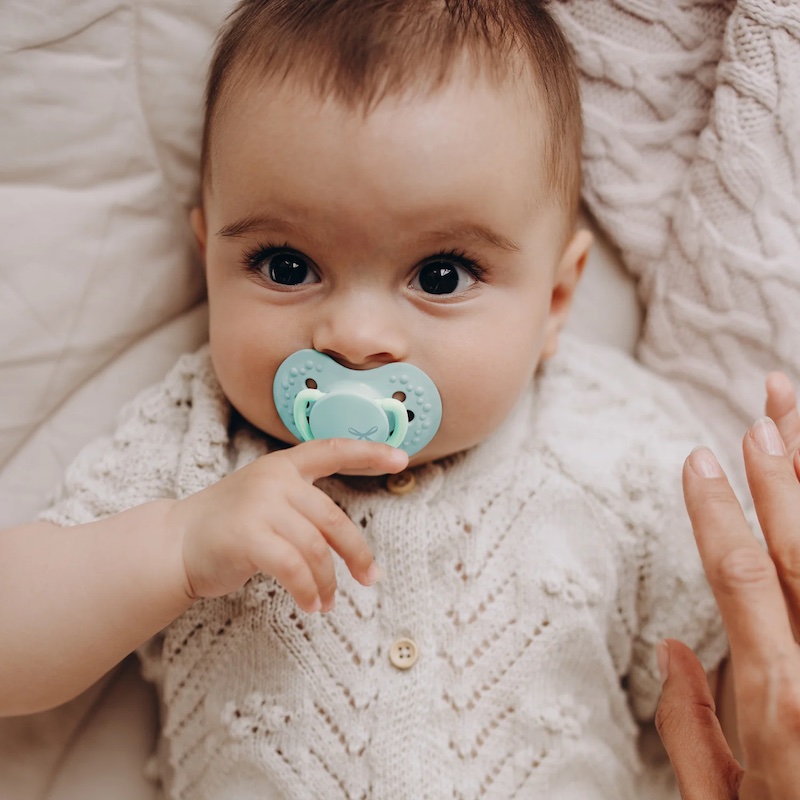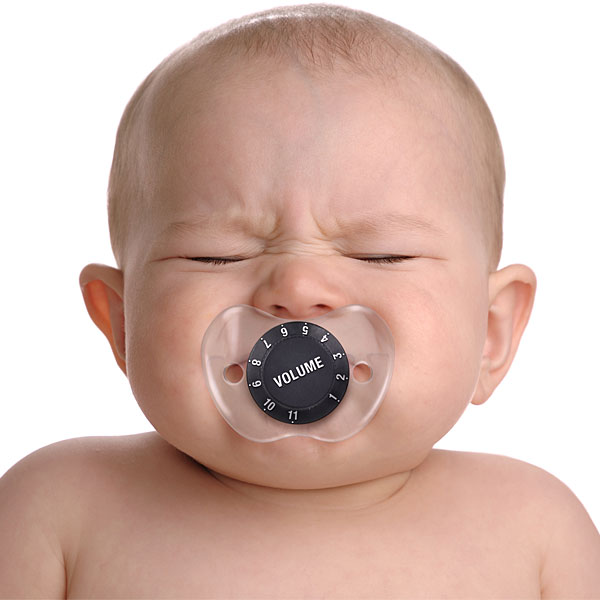The Great Pacifier Debate: Pros and Cons for Newborns
The discussion on whether can newborns have pacifiers is ongoing. Many parents and experts weigh in on this with varying opinions. Let’s dive into the pros and cons of allowing newborns to use pacifiers.
Pros of Using Pacifiers for Newborns:
- Soothes and Calms: Pacifiers can have a calming effect on babies, helping them to soothe themselves and sometimes even reduce crying.
- Sleep Aid: For some infants, a pacifier can help them fall asleep more easily.
- Pain Relief: Studies suggest that pacifiers can provide pain relief, especially during medical procedures.
- SIDS Prevention: Some research has found a reduced risk of Sudden Infant Death Syndrome (SIDS) among babies who use pacifiers while sleeping.
Cons of Using Pacifiers for Newborns:
- Feeding Confusion: Newborns may become confused if given a pacifier before breastfeeding is well-established, potentially leading to issues.
- Ear Infections: Pacifier use has been linked to an increased risk of ear infections in some babies.
- Dental Problems: Long-term use can lead to dental misalignment or bite problems in older children.
- Dependency: There’s the risk that the baby may become dependent on the pacifier for comfort.
Each family must consider these points carefully. The right choice for one baby might not be the best for another. Consulting with a pediatrician can provide personalized guidance tailored to each infant’s needs.
When to Introduce a Pacifier to Your Newborn
Deciding when to introduce a pacifier to a newborn requires careful consideration. Parents often ask, “Can newborns have pacifiers?” and the answer is not a simple yes or no. To minimize potential issues such as feeding confusion, it’s best to wait until breastfeeding is well-established. This typically happens around 3 to 4 weeks after birth, but it can vary for each mother-baby duo.
Here are some signs that breastfeeding is going well, which can indicate it’s a good time to introduce a pacifier:
- Your baby latches onto the breast without trouble.
- Feeding sessions seem to satisfy your baby.
- Your baby gains weight as expected.
- Your baby has a regular pattern of wet and dirty diapers.
Once these signs are consistent, you can consider offering a pacifier. However, if you notice any negative changes in your baby’s feeding habits after introducing a pacifier, it may be wise to remove it and consult with your pediatrician. They can provide guidance specific to your infant’s needs and help ensure both breastfeeding success and the beneficial use of a pacifier.
Choosing the Right Pacifier for Your Infant
Selecting an appropriate pacifier involves several factors. Babies have individual preferences, so you might need to try a few types. Consider the following when choosing a pacifier for your infant:
- Material: Silicone and rubber are common materials. Silicone is durable and easy to clean, while rubber is softer but may wear out faster.
- Size and Shape: Make sure the pacifier is suitable for your baby’s age. It should fit comfortably in your baby’s mouth.
- One-piece vs. Multiple-pieces: A one-piece design is safer as it reduces choking hazards. Avoid pacifiers that come with detachable parts.
- Orthodontic Pacifiers: Some pacifiers are designed to support oral development. These may help prevent dental issues in the future.
- Ventilation Holes: Choose a pacifier with ventilation holes. These allow air circulation and prevent saliva from building up, which might cause skin irritation.
- Handle and Attachments: A pacifier with a ring makes it easier for parents to remove the pacifier. Also, avoid long straps that can pose a strangulation risk.
- Ease of Cleaning: Look for pacifiers that are dishwasher safe or easy to sterilize. Good hygiene is essential to prevent infections.
Once you have the right pacifier, observe how your baby reacts to it. Some newborns may refuse certain pacifiers or only accept a particular type. Remember, even if a pacifier looks perfect, it needs to meet your baby’s approval. If your baby shows signs of discomfort or rejects the pacifier, replace it with another type to find the best fit. Can newborns have pacifiers? Certainly, but always keep your baby’s specific needs in mind.
Pacifiers and Breastfeeding: Navigating Potential Issues
When it comes to combining pacifiers and breastfeeding, new parents often express concern about potential issues. ‘Can newborns have pacifiers?’ remains a common question as they try to balance these two aspects.
Early Introduction and Feeding Confusion: Introducing a pacifier too soon may lead to what’s known as nipple confusion. This occurs when a newborn struggles to adjust between the differing mechanics of breastfeeding and pacifier sucking. To avoid this, it’s wise to introduce a pacifier only after the newborn has mastered latching and sucking at the breast.
Breast Milk Production Impact: The use of a pacifier might influence a mother’s milk supply. Since breastfeeding works on a supply and demand principle, any reduction in actual feeding time caused by the pacifier could potentially decrease milk production. Monitoring feeding times versus pacifier use can help manage this balance.
Rejection of the Breast: Some infants might prefer the consistent resistance offered by a pacifier and may start rejecting the breast. Keep an eye out for any decrease in interest or difficulty in breastfeeding once a pacifier is introduced.
Expert Tips for Coexistence: Many lactation consultants suggest waiting to use a pacifier until breastfeeding routines are established. They also recommend assessing the baby’s growth and weight gain to ensure they are receiving adequate nutrition before adding a pacifier to the routine.
Parents should remain observant to the baby’s feeding cues and maintain regular feeding schedules, even with pacifier use. When in doubt, always seek advice from a healthcare professional to personalize practices for your baby’s needs.
In summary, can newborns have pacifiers? Yes, but with careful management to avoid compromising successful breastfeeding. Parents should pay close attention to their newborn’s response and feeding habits, and liaise closely with their pediatrician to preemptively address any concerns.
Safety Tips for Pacifier Use in Newborns
When considering if can newborns have pacifiers, safety is paramount. Here are essential safety guidelines for pacifier use:
- Monitor Usage: Keep watch on how often your newborn uses a pacifier. Limit use if necessary.
- Correct Attachment: Ensure the pacifier is firmly attached to the ring or handle to prevent choking hazards.
- Pacifier Inspection: Regularly check the pacifier for damage. Discard it if you find tears or cracks.
- Avoid Decorations: Choose simple pacifiers without added decorations that could come loose.
- No Strings Attached: Never tie a pacifier around your baby’s neck. Use clips with short ribbons instead.
- Supervised Use: Always stay close when your newborn is using a pacifier. Remove it while sleeping.
- Cleanliness: Sterilize the pacifier regularly and keep it clean between uses to prevent germ buildup.
By following these tips, parents can ensure the pacifier is a safe and helpful tool for their newborn. Can newborns have pacifiers? Yes, if used safely and judiciously.
Hygiene and Care: Keeping Your Baby?s Pacifier Clean
Hygiene is crucial when using pacifiers for newborns. Parents often worry about keeping them clean. Here are some steps to ensure your baby’s pacifier stays sanitary:
- Wash Hands: Always wash your hands before handling your baby’s pacifier.
- Boil or Steam: Sterilize pacifiers by boiling or steaming them, especially when new.
- Regular Cleaning: Clean the pacifier with hot, soapy water daily. Rinse it well.
- Dishwasher Safe: Use the dishwasher if the pacifier is dishwasher-safe. Place it on the top rack.
- Dry Completely: After cleaning, make sure the pacifier is completely dry to prevent bacteria.
- Storage: Store the pacifier in a clean, dry place. Use a case or cover.
- Replace Regularly: Pacifiers can wear out. Replace them every two months or sooner if damaged.
- Avoid Sugary Substances: Never dip a pacifier in sweet liquids to avoid tooth decay.
- Check for Damage: Inspect the pacifier often for weak spots, tears, or changes in texture.
Keeping the pacifier clean will protect your baby’s health. It prevents the growth of bacteria that can be harmful to newborns. Can newborns have pacifiers? Yes, but cleanliness is key to safe use.
Addressing Common Concerns: Dependency and Dental Health
When parents consider whether ‘can newborns have pacifiers,’ two common worries are dependency and dental health.
Understanding the Risk of Dependency
Dependency on pacifiers is a valid concern. To limit this risk:
- Set Limits: Use pacifiers for sleep and comfort only. Avoid constant use throughout the day.
- Observe Cues: Watch for natural self-soothing behaviors, like thumb-sucking, and encourage those.
- Introduce Variety: Mix in other comforting items like blankets or stuffed animals.
- Phase Out Gradually: As your baby grows, reduce pacifier use. Aim to wean off by age 2.
These steps can help ensure that your child doesn’t become overly reliant on a pacifier for comfort.
Dental Health Implications
Pacifier use can affect your child’s dental health. However, problems are more likely with long-term use. To prevent dental issues:
- Use Orthodontic Pacifiers: They’re designed to minimize the impact on teeth and gum development.
- Monitor Use: Extended pacifier use can lead to misaligned teeth or bite problems.
- Consult a Pediatric Dentist: Seek advice on how to use pacifiers without harming dental health.
Dental concerns with pacifiers can be managed with proper use and by staying informed. Regular dental check-ups are crucial.
By addressing these concerns and taking proactive steps, parents can make an informed decision about pacifier use for their newborn’s comfort without compromising their health and development.
Expert Recommendations on Pacifier Use for Infants
When it comes to answering ‘can newborns have pacifiers?’ experts offer guidance. Here’s a summary of their advice:
- Wait to Introduce: Experts suggest waiting a few weeks before giving a pacifier to a newborn. This helps to establish breastfeeding habits first.
- Choose Wisely: Select a pacifier that’s right for your baby’s age and development. Look at size, shape, and material.
- Watch for Signs: Be aware of any changes in your baby’s feeding habits. If you notice issues, talk to your pediatrician.
- Use in Moderation: Do not let the pacifier replace feeding or other forms of comfort. It’s a tool, not a solution.
- Clean Regularly: Keeping pacifiers clean is a must to avoid germs. Sterilize often and check for damage.
- Dental Checks: Consult a pediatric dentist to discuss potential impacts on your baby’s dental health.
- Avoid Dependency: Encourage self-soothing habits and plan to phase out the pacifier by age two.
Parents can trust these expert tips when deciding if their newborn can have a pacifier. Safety and health are the top priorities when making this choice.



